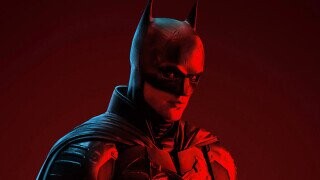The Rule That Determines If Batman Villains Do (Or Don't) Work In Movies

This article contains SPOILERS for The Batman.
Without villains, Batman movies would just be tedious dramas about a grown man who inexplicably spends most of his time in a dank cave. But who is Batman’s greatest enemy? The Joker? Two-Face? The inability to turn your neck even slightly to the side? Arguably, the answer is a far more abstract adversary: the past. Batman’s crime-fighting is always, to some extent, a symbolic battle with the trauma of his childhood.
Often filmmakers try to make this thematic underpinning explicit, giving Gotham’s villains a personal connection to Bruce Wayne’s past. In The Batman, not only is Thomas Wayne’s Mayoral campaign a key part of the web of corruption that is eventually exposed, but we also find out that The Riddler was once the resident of a dilapidated orphanage, who resented the privilege of his wealthy parent-less counterpart.
Don't Miss
This trend was first set in Tim Burton’s 1989 Batman, which revised Bruce Wayne’s origin story, making a young pre-toxic chemical bath Joker his parents’ killer.
This makes the storyline tidier within the context of the one movie – but it ultimately undoes the larger meaning of Batman’s quest. We don’t need Batman’s enemy to literally be the guy who bumped off the Waynes because metaphorically, they all are to some extent. Stopping Joker shouldn’t bring any resolution to Bruce Wayne’s oath, lest the Batman series grind to a halt. This wasn’t just a problem for fans; it even bothered co-screenwriter Sam Hamm who called the twist “grotesque and vulgar,” adding that it, “Allows Batman to resolve its initial trauma easily,” because “once he nails the guy who ruined his life, he can hang up the suit happily.”
Plus, it could be argued that The Joker already embodies a symbolic connection to Bruce’s past; a terrifying clown is basically a visual metaphor for polluted childhood and loss of innocence. Similarly, The Penguin of Batman Returns, not unlike The Batman’s Riddler, mirrors Bruce’s origin to some extent, both being children of wealth. But while Bruce was welcomed into his family, baby Oswald Cobblepot was thrown into a freezing river which, in retrospect, was a pretty messed up way to begin a movie with a Happy Meal tie-in.
But perhaps the best example of this approach can be found in 1993’s Batman: Mask of the Phantasm. Most obviously, the identity of the mysterious Phantasm is literally a person from Bruce Wayne’s past, a shocking twist for anyone who hadn’t been to the action figure aisle of Toys “R” Us that month. But also, the theme of regret is underscored by the character’s design, purposefully meant to evoke the Ghost of Christmas Yet to Come from Dickens’ A Christmas Carol. Thus the Phantasm is, in a sense, intended to represent a manifestation of time, and of how the choices we make in the past affect how our lives will ultimately end up.
And the climax, set in the abandoned “World of the Future” expo, makes this concept even more evident; Batman is wrestling with his past in the literal ruins of the life he once imagined for himself. Pretty heavy stuff for a franchise that also features crocodile men and shapeshifting clay monsters.
Presumably, Batman movies won’t stop tethering villains to Bruce’s past anytime soon – but a nearly 30-year-old cartoon still did it best.
You (yes, you) should follow JM on Twitter!
Top Image: Warner Bros.